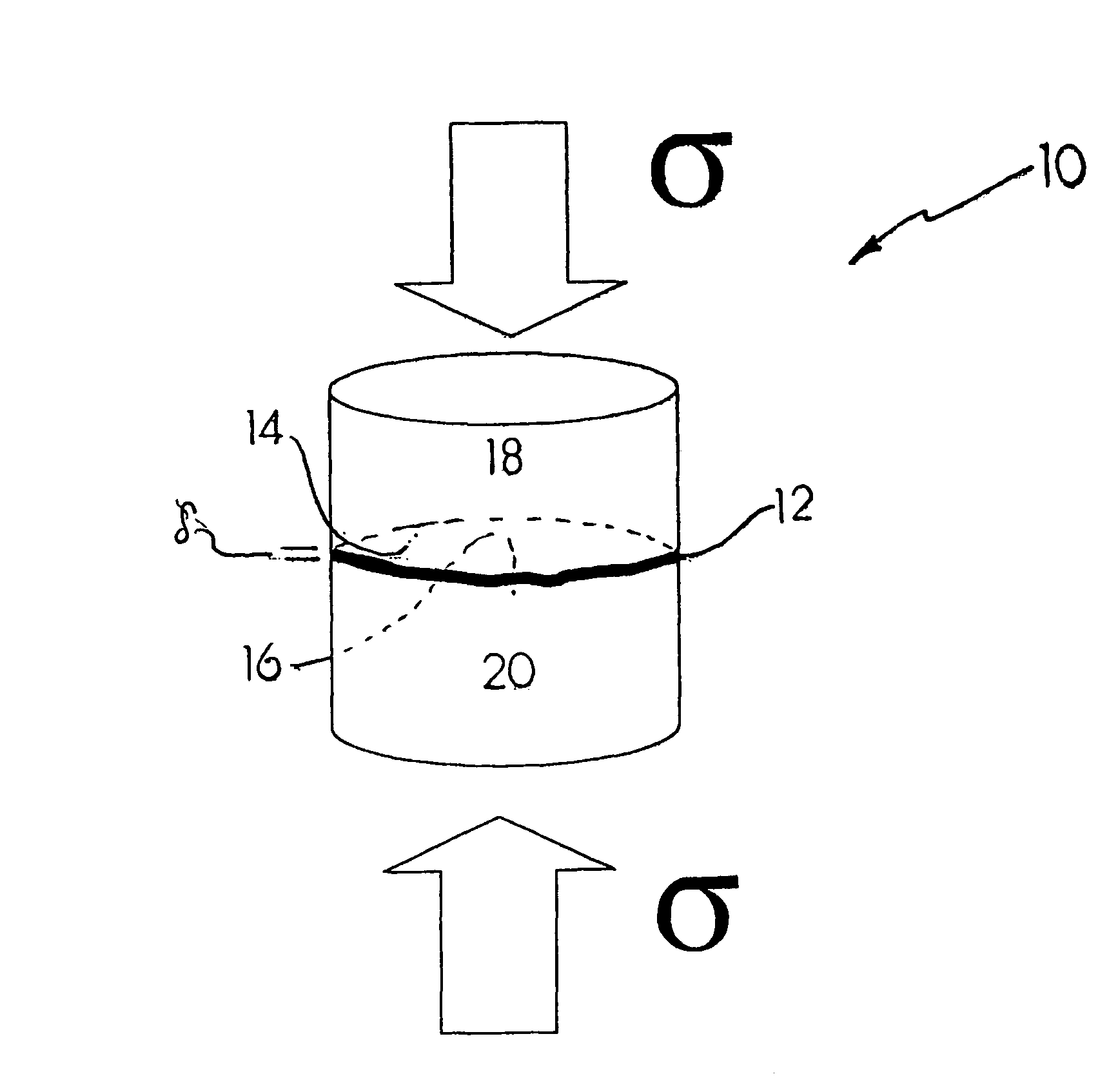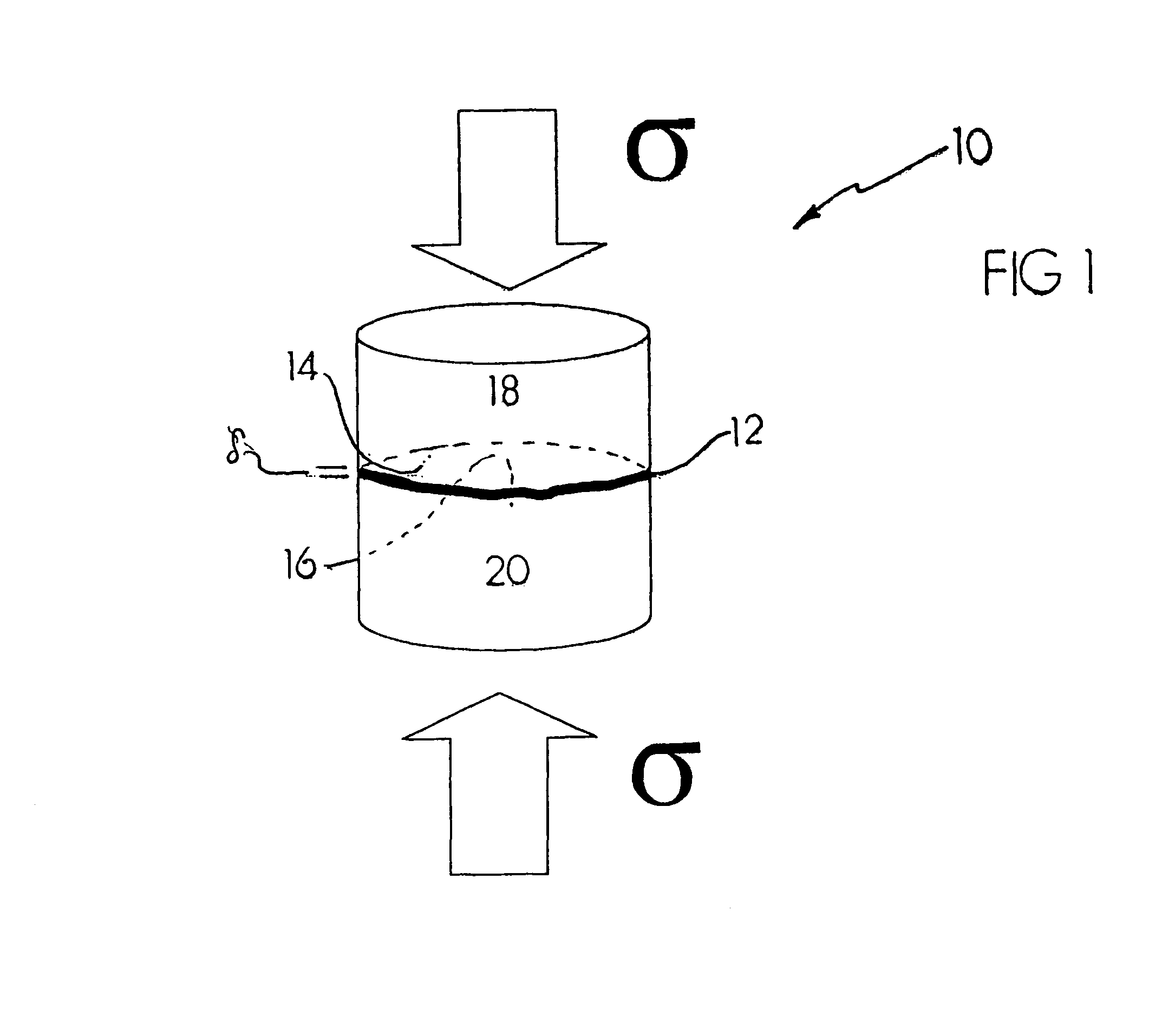Joining of advanced materials by plastic deformation
a technology of advanced materials and plastics, applied in the field of joining together single-phase or multi-phase objects, can solve the problems of shrinkage of the construction, final machining of the construction, and the general difficulty of the construction to form into complex shapes, and achieve the effects of reliable joints, same porosity, transparency and strength
- Summary
- Abstract
- Description
- Claims
- Application Information
AI Technical Summary
Benefits of technology
Problems solved by technology
Method used
Image
Examples
example 1
[0097]Dense Al2O3 / YSZ pellets, denoted ZTA, are joined without an intermediate layer. The invented protocol allows for one of the pellets to be from 15 to 85% Al2O3, with the balance being YSZ, and the other pellet being from 0 to 100% Al2O3, with the balance being YSZ. The pellets are prepared by blending starting powders well in the case of particulate ZTA composites or simply weighing out powders in the case of monolithic ceramics. The powders are then cold-pressed into compadts, which are sintered in air, oxygen, or inert atmosphere at temperatures of 1400-1600° C.
[0098]Thermal-expansion coefficients of the ceramics and composites were measured in a Theta Industries Dilatronic (Port Washington, N.Y.).
[0099]Once the two surfaces are mated, the construct is placed under compression utilizing a commercially available ram, such as an Instron universal testing apparatus (Canton, Mass.). The construct and compression rams are then heated to a temperature that is approximately 0.6 that...
example 2
[0102]If an intermediate joint compound is used, the dense bodies to be joined can be, but are not limited to, ZTA composites, or pure Al2O3, or pure ZrO2. They are prepared in the same manner as described in Example 1. Once they have been sintered, they are coated with the joint material.
[0103]In this example, a dense 60 vol. % Al2O3 / 40 vol. % YSZ body is joined to a dense 40 vol. % Al2O3 / 60 vol. % YSZ body. The intermediate layer is 50 vol. % Al2O3 / 50 vol. % YSZ (50ZTA), which is applied by aerosol spraying. No surface preparation is required of the bodies to be joined. The joint material is prepared by blending 2 g of 50ZTA, 5 g of solvent, 1.2 g a suitable binder, such as of Rohm & Haas AT-51 binder, 0.15 g of a plasticizer such as 0.15 g of Monsanto S-160 plasticizer, and 0.06 g dispersant, such as Avecia S-9000 dispersant. These constituents are placed in a milling container, in this case a 25 mL polyethylene jar, along with YSZ grinding media. The jar was then sealed and plac...
example 3
Join Optical Ceramics:
[0130]Applications for such materials include optical windows, wave guides, fibers, radomes, and mirrors. MgF2 is perhaps the most widely used ceramic for optical applications. It transmits IR wavelengths (0.2-10 μm), but our process can be used to join other polycrystalline optical-transmitting materials based on oxides, halides, and silicates.
[0131]In one embodiment: MgF2 ceramics of sample size 3×3×5 mm were mated, with no surface preparation. They were heated in argon to 800° C. and compressed at strain rates of 5×10−6 / s to a total strain of less than 5%. Optical transmission properties of as-received and joined samples were measured and found to be almost identical.
PUM
| Property | Measurement | Unit |
|---|---|---|
| average size | aaaaa | aaaaa |
| pressure | aaaaa | aaaaa |
| grain sizes | aaaaa | aaaaa |
Abstract
Description
Claims
Application Information
 Login to View More
Login to View More - R&D
- Intellectual Property
- Life Sciences
- Materials
- Tech Scout
- Unparalleled Data Quality
- Higher Quality Content
- 60% Fewer Hallucinations
Browse by: Latest US Patents, China's latest patents, Technical Efficacy Thesaurus, Application Domain, Technology Topic, Popular Technical Reports.
© 2025 PatSnap. All rights reserved.Legal|Privacy policy|Modern Slavery Act Transparency Statement|Sitemap|About US| Contact US: help@patsnap.com



